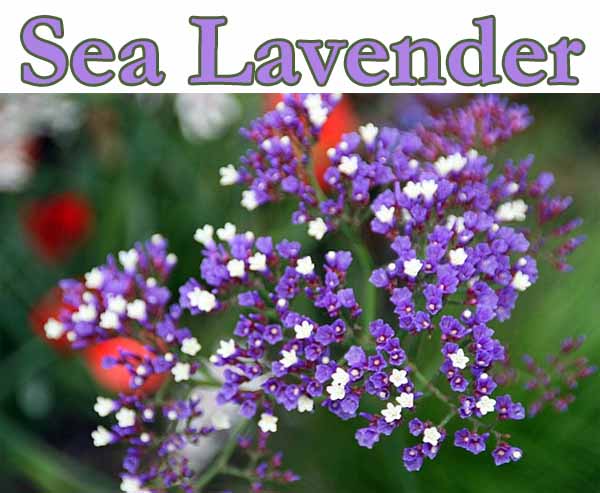Newsletter Articles
Sea Lavender
By Richard Flowers, ACCNP-Green Thumb Nursery-Ventura
I remember when I was younger, I always enjoyed picking the fresh dried flowers from my Sea Lavender bed for my mom. I took my pruner and I snipped as low as I could inside the plant. The everlasting purple flowers stayed for weeks inside a vase with water in a sunny kitchen window.
Sea Lavender has other virtues besides being a marvelous cut flower for bouquets. Today, I still have these memorable plants in my own landscape as these plants attract butterflies, endure intense heat (if planted in partial shade), require low to moderate amounts of supplemental water once established, bloom almost non-stop throughout the year, and are carefree subjects.
Botanically known as Limonium perezii and native to a limited area of the Canary Islands, it is considered to be a rare and vulnerable species in its natural habitat because of low population size and restricted distribution; however it is very common in cultivation and home landscapes.
Limonium perezii is easily remembered as Sea Lavender or Statice. Statice grows to three foot tall including the flower stalks. This tough perennial spreads by a woody rhizome (underground modified stem) as well as by seeds. Each individual plant grows in a rosette of one foot long triangular-shaped rounded leaves held on long petioles (the leaf stem). Each rosette clumps two to three feet wide when mature. The inflorescence is a branched flower composed of many tiny, delicate, and airy flowers that rise to eighteen inches above the foliage with red stems. The flowers are purple with white inside and feel like paper.
In the landscape, Sea Lavender is effectively used in water-wise gardens, borders, containers, cutting gardens, and butterfly havens. Try including Statice in rock gardens, fire-scaping gardens, and dry stream beds. Some suggested companion plants that work harmoniously together with Statice are Daylily, Black-Eyed-Susan, Yarrow, Gazania, and succulents such as Sedum and Echeveria.
Being an evergreen perennial, Statice prefers full sun or partial shade in hottest climates. This species tolerates many types of soils but does best if planted in a well-drained site. Sea Lavender is hardy to about 25°F. and tolerates a wide range of climates spanning from the coast to hot interior locales.
Requiring little maintenance, the only up-keep I do to my Sea Lavender plants is occasionally trimming away old leaves and spent flowers to keep them neat and tidy. Every two to three years dividing is necessary in the spring to renew vigor.
I invite you to browse at your favorite Green Thumb, we have lots of great plants for you to choose from, and if you need any help, please ask.
Do you like what you see? Sign up for our weekly newsletter to get content like this every week!


